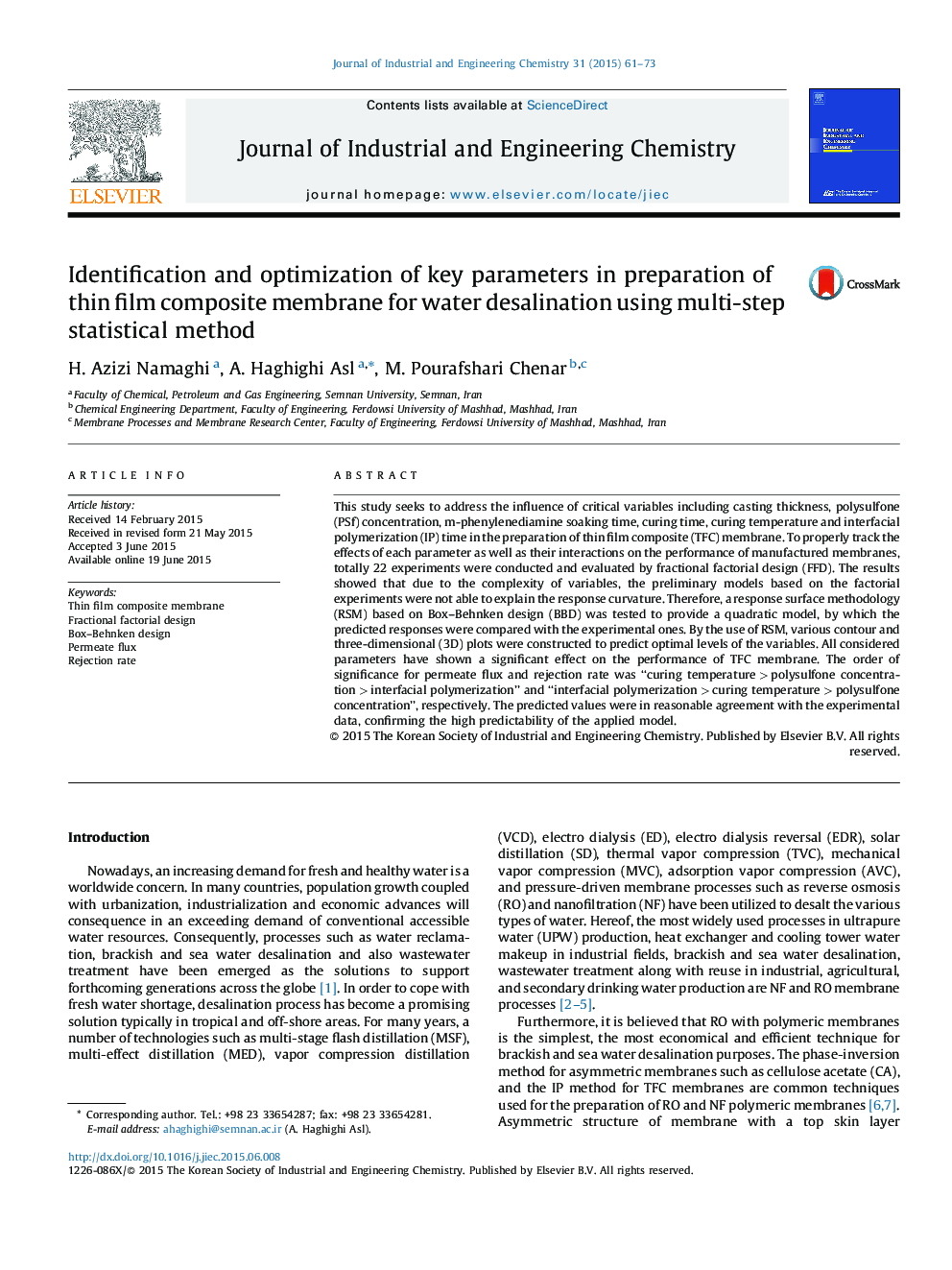| Article ID | Journal | Published Year | Pages | File Type |
|---|---|---|---|---|
| 226986 | Journal of Industrial and Engineering Chemistry | 2015 | 13 Pages |
•Effect of various factors was evaluated on TFC membrane preparation statistically.•Foldover fractional factorial design offers good and fast screening procedure.•The RSM is used for optimization of significant factor on TFC membrane preparation.•The RSM models were interpreted via analysis of variance (ANOVA).
This study seeks to address the influence of critical variables including casting thickness, polysulfone (PSf) concentration, m-phenylenediamine soaking time, curing time, curing temperature and interfacial polymerization (IP) time in the preparation of thin film composite (TFC) membrane. To properly track the effects of each parameter as well as their interactions on the performance of manufactured membranes, totally 22 experiments were conducted and evaluated by fractional factorial design (FFD). The results showed that due to the complexity of variables, the preliminary models based on the factorial experiments were not able to explain the response curvature. Therefore, a response surface methodology (RSM) based on Box–Behnken design (BBD) was tested to provide a quadratic model, by which the predicted responses were compared with the experimental ones. By the use of RSM, various contour and three-dimensional (3D) plots were constructed to predict optimal levels of the variables. All considered parameters have shown a significant effect on the performance of TFC membrane. The order of significance for permeate flux and rejection rate was “curing temperature > polysulfone concentration > interfacial polymerization” and “interfacial polymerization > curing temperature > polysulfone concentration”, respectively. The predicted values were in reasonable agreement with the experimental data, confirming the high predictability of the applied model.
